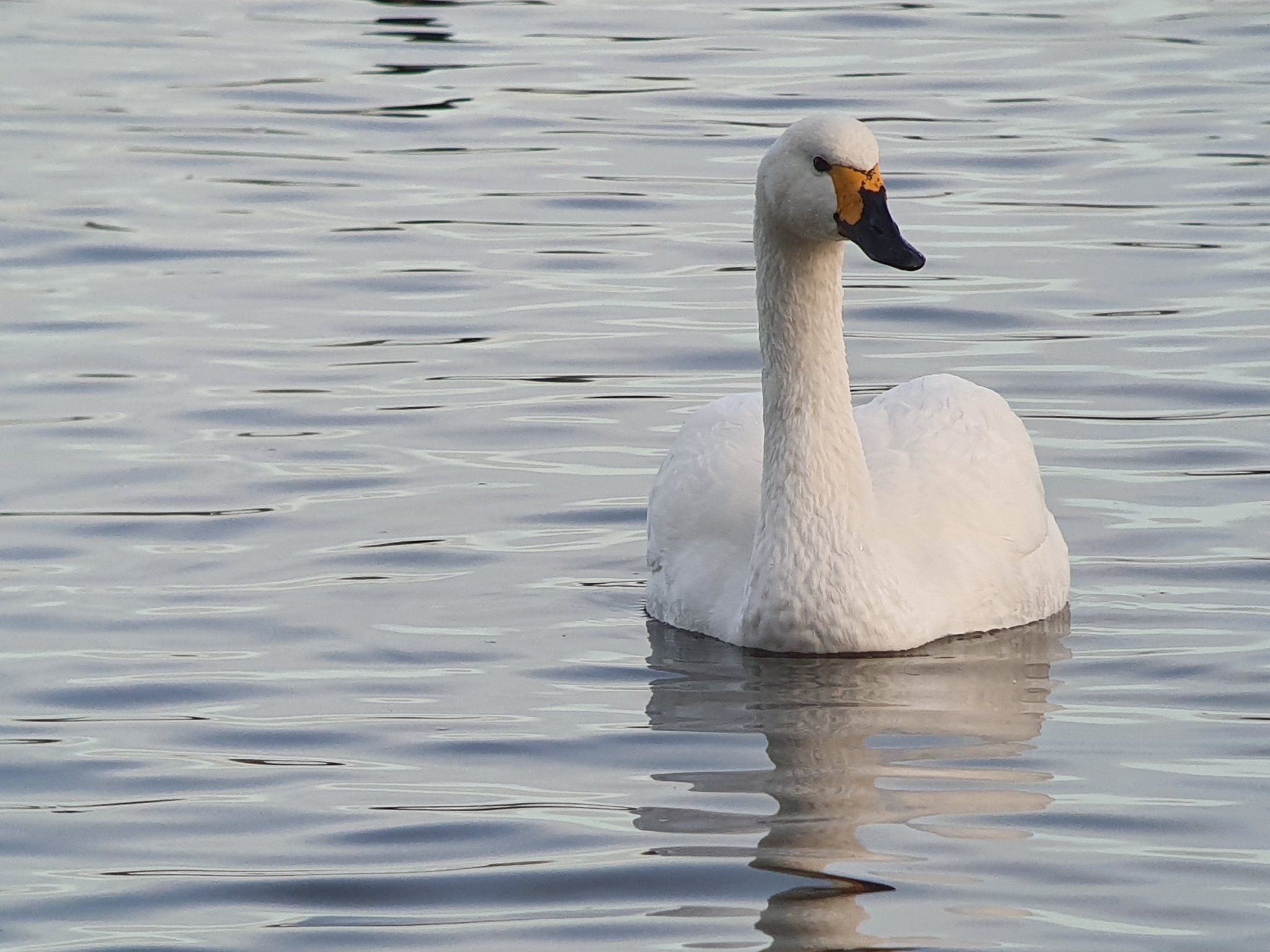Centre now closed for lockdown
Unfortunately due to the national lockdown all WWT centres are now closed, but our conservation work continues

Unfortunately due to the national lockdown all WWT centres are now closed, but our conservation work continues with our staff and a few volunteers working hard to manage the reserve for wildlife, and ensure we're ready to reopen again once the restrictions have changed.
Bewick's Swan update
Numbers continue to creep upwards with 80 birds counted yesterday (Tuesday 5th January) which included nine new arrivals. Overall our researcher, Steve, has now recorded 94 birds this season from their unique bill patterns, along with six cygnets recorded so far. It looks like another poor breeding season for the species but we will wait to see what counts are made by our colleagues across Europe.
Within the flock there are some good news stories, including Babato (male) who arrived on the Rushy on Boxing Day a full month after his mate Babaco, so it is nice to see them back together.
Two of the cygnets belonged to Maisie and Mayfeld, their first family together and a good sign considering they are quite a young pair. Regular visitors to Slimbridge may remember Maisie from previous years as she used to have a satellite collar allowing us to track her migration as part of the Flight of the Swans expedition. The family has since moved off elsewhere but may return in the coming weeks before starting their return migration back to Russia.
Don't forget that whilst the centre is closed you can catch up with our Bewick's Swans and all the birds on the Rushy via our webcam here.
Other wildfowl
Over the last few days we have seen a few extra geese arrive on the reserve including single Pink-footed Goose, single Dark-bellied Brent Goose and a single Bean Goose. The White-fronted Goose flock have increased to around 170 birds and have been spending most of their time in the Canal Ground field enjoying the new scrape and wetland features we created here over the last year. The bird can sometimes be seen from the canal towpath south of Patch Bridge but if you head out to look for the birds please take care to avoid disturbing them.
The Cackling Goose which spent a few weeks on the reserve had been seen across the river at Walmore Common, but has now returned back to Slimbridge and was seen on the Tack Piece today (Wednesday 6th January).
Many of the duck on the reserve were forced on to the river during the cold and frozen weather but are now gradually returning back to the fields, especially now the flooding has reduced.
Waders
We still have good numbers of Lapwing, Golden Plover, Dunlin and Curlew using the reserve, and all species can usually be seen in the air above the centre. Lapwing, Dunlin and Curlew are also occasionally seen feeding in the roadside fields on the approach to the centre. A few of our additional interesting wader species also remain - it looks as though the Greenshank and Little Stint are going to over-winter with us this season.
Good numbers of Redshank and Ruff have also been busy on the Tack Piece, and the first returning Avocet of the year remains on the Black-tailed Godwit flock. It won't be too long now before the first Oystercatchers return too for the breeding season.
Other species of note
Over the last few days we've noticed that the egret roost that was building in the Decoy has now moved to the South Lake owing to the current cold wind direction. Up to ten Cattle Egret and eight Little Egret have been recorded, so if you are in the local area birding don't forget to check the neighbouring fields along the canal where the Cattle Egrets in particularly like to spend their time.
Our remote camera traps have also been recording throughout Christmas and New Year and we've recorded several videos of a pair of Otters using the north of the reserve, including the new paleochannel wetland corridor that we have created. Check out the video on our Twitter feed here.
Bird of prey activity remains high with Buzzard, Peregrine, Merlin and at least two different Goshawk all seen in the last few days, causing panic amongst the duck and waders.



